Saving Seeds
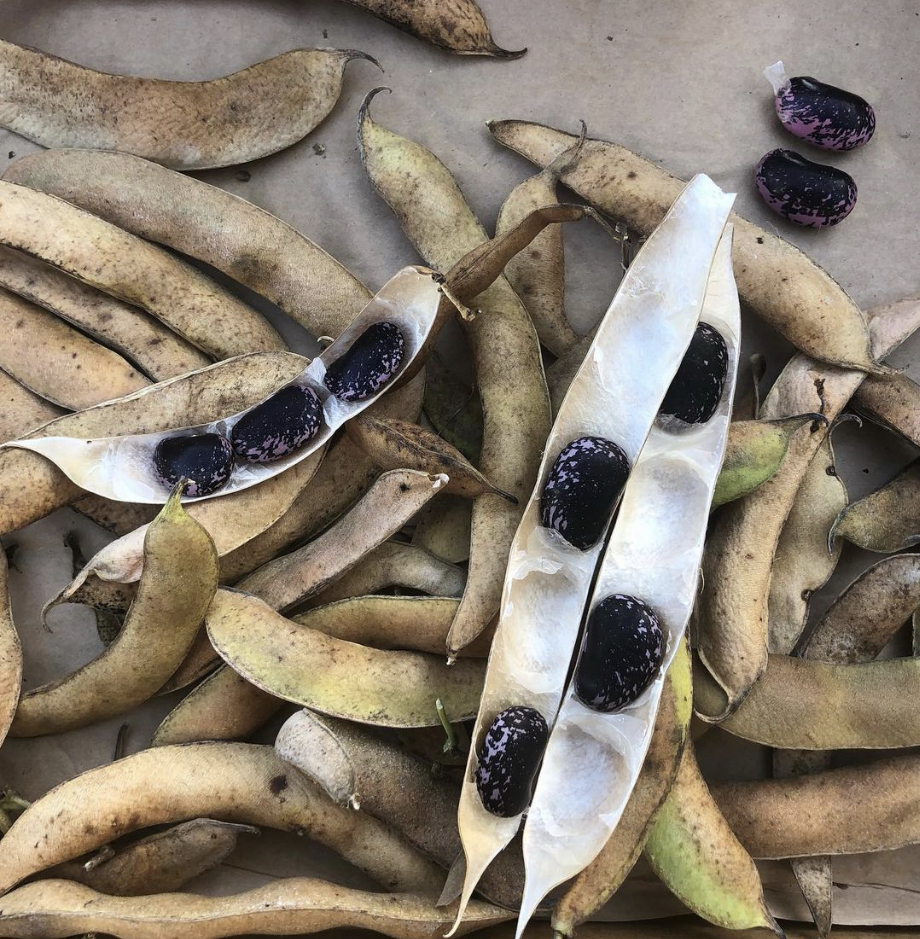
When I think about the desirability and feasibility of a farm saving its own seed, my mind turns from considering the actual mechanics of how to go about maintaining and reproducing healthy seed stock to reflecting on the high cost of rent. A look back at the business practices of The Beatles is illuminating, as well. Yeah, yeah, yeah! So here’s my perspective:
The first thing to bear in mind is that a seed crop inevitably takes a lot more time to realize its potential than would the harvest of the same plant grown for the consumer. Take lettuce, for example; if a romaine lettuce seed can sprout and grow into a plant that is the ideal size for harvest in 60 days, then the same plant grown for a seed crop would still have to grow until it is mature enough to flower. After flowering, the seed grower still has to wait for the pollinated lettuce flowers to set seed and then dry down to the point that the seeds can be easily threshed and collected. By now, you’re talking about almost a year of time invested by the farmer in a seed crop of lettuce. Crops other than lettuce might take even longer to produce. Celery can grow a whole year before it bothers to send up a seed stalk, and the celery plant might only produce the mature seed after 18 months. The time that a seed crop takes to produce is a very important consideration because “time is money” and, if you’re renting the space you’re growing on, then rent exercises a constant force of gravity on your decision making process.
I’m farming within several miles of the ocean near Santa Cruz, with one rented parcel and one field I own. The landowners are not managing most of the farmland around here. Maybe the owners’ grandparents were farmers, or their great-grandparents, but the present day owners are often/usually the descendants of the historical farmers and they are the beneficiaries of family trusts that rent the land to the contemporary farmers. The Monterey Bay Area is a very pleasant place to live so there’s constant market pressure on landowners to develop rural land into housing. If you see a large tract of ground being farmed around here anymore you can assume that it is such good farmland that it is worth keeping in agriculture. Out along San Andreas Road, for example, within sight and sound of the waves breaking on Sunset beach, the farmland will rent for at least $2,500/acre per year, and in some cases even more than that. That land is great for strawberry production. If you’re a landowner with a 40 acre parcel there you’d be a fool to be a farmer. Forty acres rented for strawberry production yields $100,000 to the landlord with payments due on the first day of the year. You’d be super lucky to realize that kind of income actually growing crops on that ground, and you’d be subject to every vulnerability and liability that every grower faces. There are hardly any crops other than strawberries that can hope to cover the upfront costs of such expensive land and seed crops definitely don’t “pencil out.”
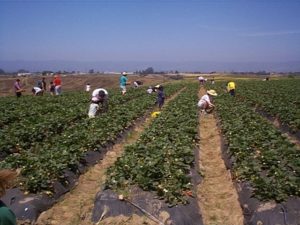 Further up the Pajaro Valley, away from the ocean, where the conditions for strawberries are not quite so perfect, the price per acre may fall to $2000/acre by Murphy’s Crossing Road or even to $1800/acre out by the county line. By the time you get to Hollister, where the land is not cool enough for strawberries, land rents may only total $700 or $800/acre, which is cheap enough to allow production of cheaper crops, than strawberries, like summer squash, broccoli, sweet corn, or peppers, but the land is still not cheap enough to make the costs of managing the land for most seed crops. There actually are a number of seed companies located in the Hollister/Gilroy area, but they are mostly focused on the breeding and development work for new crop varieties. Not only is the Hollister/Gilroy area a great environment for growing a wide range of floral and edible crops, the neighborhood is also a pleasant (if expensive) place for the seed scientists to live and do their work. But once a target crop has been “improved” under “laboratory conditions” by the plant scientists, then the actual bulk seed production is farmed out to a grower in some other part of the world. Seed companies look for places where the climate and environmental conditions are acceptable, but the cost of land is low and the cost of labor is cheaper than dirt. Here’s where the Fab Four are worth remembering.
Further up the Pajaro Valley, away from the ocean, where the conditions for strawberries are not quite so perfect, the price per acre may fall to $2000/acre by Murphy’s Crossing Road or even to $1800/acre out by the county line. By the time you get to Hollister, where the land is not cool enough for strawberries, land rents may only total $700 or $800/acre, which is cheap enough to allow production of cheaper crops, than strawberries, like summer squash, broccoli, sweet corn, or peppers, but the land is still not cheap enough to make the costs of managing the land for most seed crops. There actually are a number of seed companies located in the Hollister/Gilroy area, but they are mostly focused on the breeding and development work for new crop varieties. Not only is the Hollister/Gilroy area a great environment for growing a wide range of floral and edible crops, the neighborhood is also a pleasant (if expensive) place for the seed scientists to live and do their work. But once a target crop has been “improved” under “laboratory conditions” by the plant scientists, then the actual bulk seed production is farmed out to a grower in some other part of the world. Seed companies look for places where the climate and environmental conditions are acceptable, but the cost of land is low and the cost of labor is cheaper than dirt. Here’s where the Fab Four are worth remembering.
When The Beatles were starting out as teenagers they got their chops down by playing all night long in the strip clubs along the Reeperbahn in Hamburg, Germany. They played loud and they played covers of other artists’ music, emulating their heroes, like Little Richard, Chuck Berry, or the Isley Brothers. But by the time they were recording their third album, A Hard Day’s Night, they’d learned that they’d make the most money if they composed and performed their own songs. Critics could listen to their music and hear echoes of all the influences that they’d absorbed. “Cultural appropriation” you could say, if you listen to “Back in The USSR,” for example, and hear Chuck Berry. But unlike some of their contemporaries who signed their names to other people’s work, the Beatles themselves were always clear about their admiration of the musicians that inspired them and keen to give credit where credit was due. If you want to look at glaring examples of “Cultural appropriation” look at the behavior of the big seed companies.
Seeds, like songs, used to be passed from one generation to the next. Who wrote “Shady Grove” and when did they do it? Who saved the first Scarlet Runner bean seed from a wild plant to sow in their garden? With music, the folk tradition guarded and honored the roots of the music even as successive generations of artists reinterpreted the melodies and themes of the songs they’d grown up with. With agriculture, the different varieties of crop plants were selected for over generations by tribal people you’ll never hear of, and women probably did most of the work. When a seed company takes a traditional, open pollinated crop like corn, which was nurtured out of wild nature by the indigenous people in the mountains of Central America, and they “improve” it, they can get a patent for their creation and start earning money. They don’t have to share any of the profits of their work with the people who did 99% of the historical work of selecting from the raw materials of nature. Just as the Beatles chose to focus on recording their own songs, however derivative they may have been of other artists’ music, the seed companies can choose to focus on producing and selling the “improved ” varieties of trusted, traditional crops that they hold patent rights on. The more successful seed companies buy out the less successful ones that were selling traditional, un-patented seed and close them down to gain more control of the market, or they may keep the brands alive but replace the open pollinated seeds with their proprietary varieties. And the price of seed to the grower goes UP, UP, UP!
Yes, because seeds are like songs, a grower can make their own music and produce their own seed. If a seed variety gets expensive enough, maybe it even becomes worthwhile to produce it on rented land in the first world. But besides rent costs, there are also other management issues that complicate seed saving. With some crops that are pollinated by the wind, like corn, it can be hard to find a spot that is isolated enough so that the seed crop is not negatively affected by being cross pollinated by another crop. With crops that insects or bats pollinate there can be isolation problems too, but they can be managed by tenting the mother plants with a system of screens. All in all, saving seed can be fun and interesting, but it can be a distracting hassle if the income of the farm is primarily derived from the sales of food crops. At Mariquita Farm I can’t really afford to save much of my own seed for the reasons outlined above, but I’ve always done it when driven to it by scarcity or frustration. Take the Scarlet Runner bean that evolved in Central America that I’ve alluded to as an example:
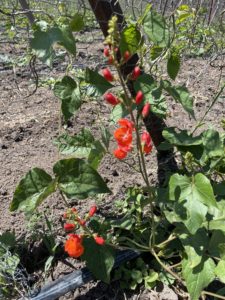
Akahana mame in flower
Following the Spanish conquest of the Americas, the Scarlet Runner bean made its way by donkey back and sailing ship from the mountains of Oaxaca to ports of Japan. Japanese farmers took the culture of this bean up and in time selected the largest beans to replant until they’d achieved an absolutely giant bean, which they called the “Akahana mame.” Because the cool, coastal conditions on my farm in Corralitos mimic the original mountain conditions where the runner bean evolved, I know I can grow good Akahana mame here. For years I’d been getting the seed from Kitazawa Seeds, an Oakland based seed company that traded in Asian crop varieties. Their seed was good, but expensive, so I began saving my own seed and, boy, am I glad I did. Last winter Kitazawa Seed got sold to a larger company, and I just went on the new website to see about getting some more Akahana mame seed. I’ve got a few blank spots in the beds that I could fill out and I’ve planted all my own seed. But the new owners want- get this!!!- $92.88/pound for their runner bean seed! Ninety-two dollars and eighty- eight cents per pound! Peaches H. Christ! Here’s the link.
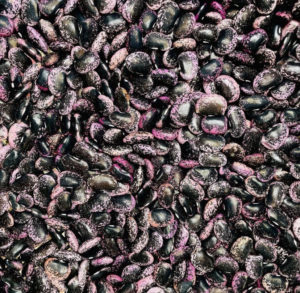
Scarlett Runner Beans
So yes, I’ll be saving more Akahana mame seed going forward. Luckily for me, I own a patch of ground that is only suited for small-scale production, and rent is not an issue. My field is isolated, so I don’t face difficulties with cross pollination, plus I’m crabby enough at the seed companies to make the work of sorting and selecting seed a satisfying task. Here are some pix of our Akahana mame beds. A bean we can all get excited about.
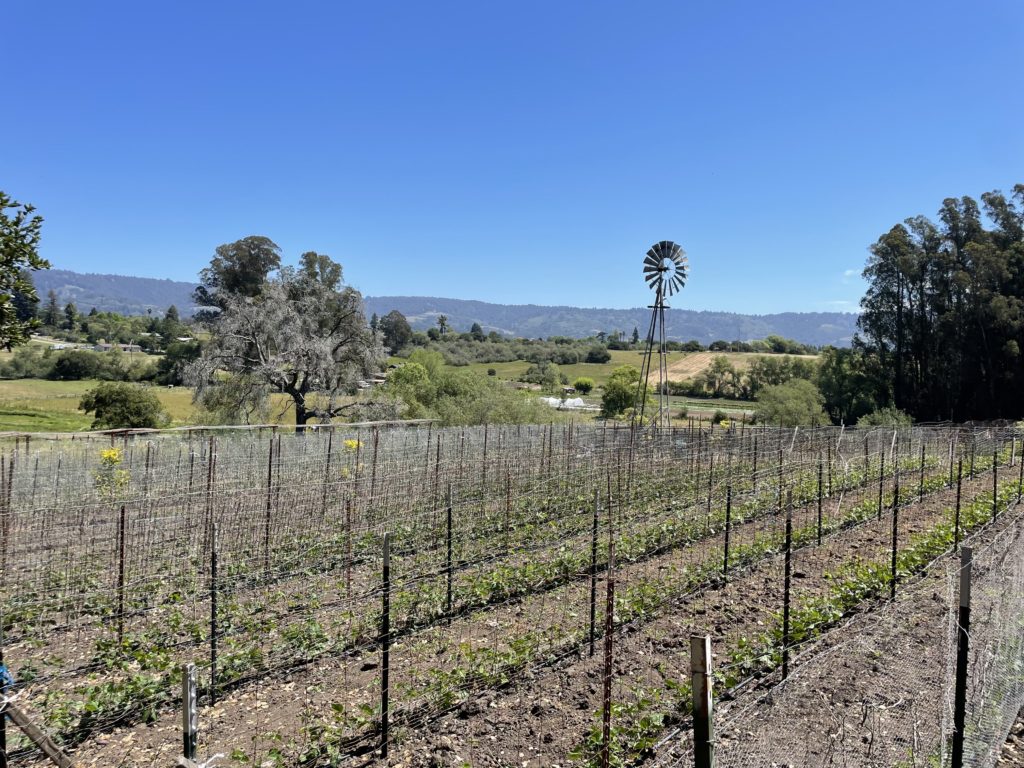
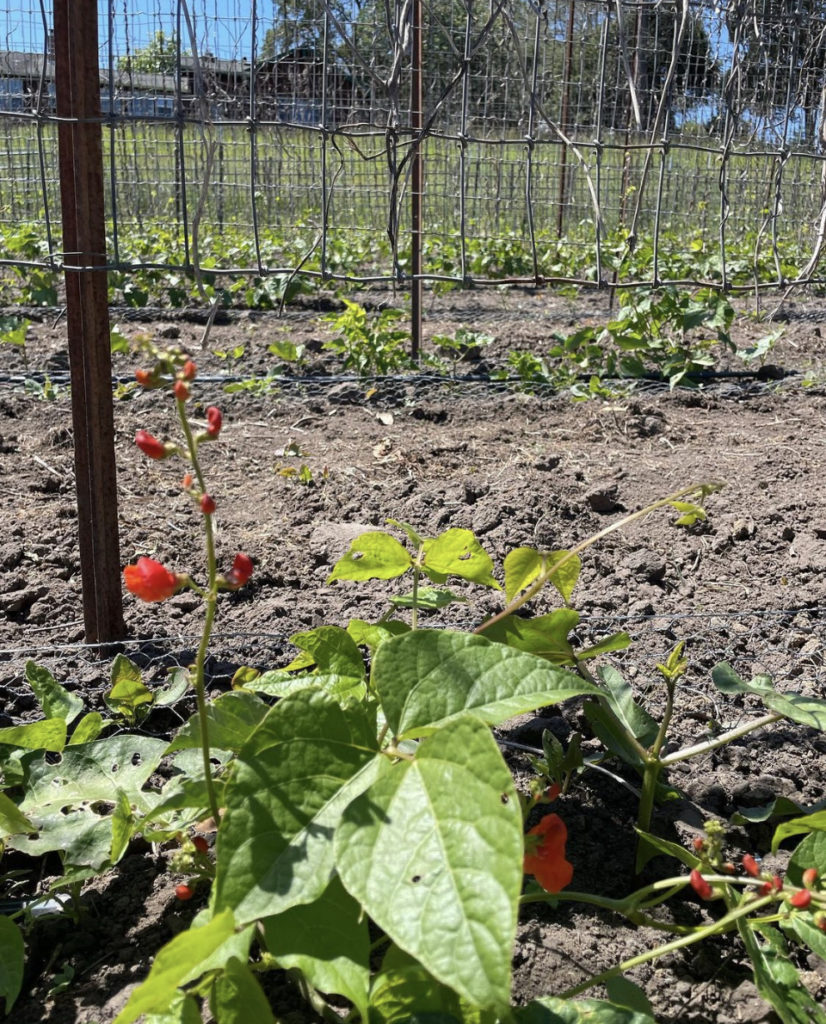
First Akahana mame flower – Scarlet Runner bean!
Andy & the crew at Mariquita Farm.
© 2022 Essay by Andy Griffin
Photos by Andy Griffin


